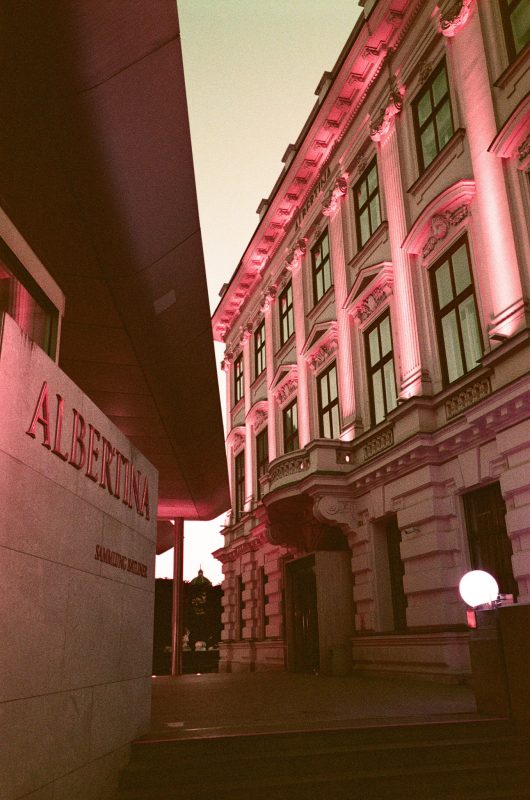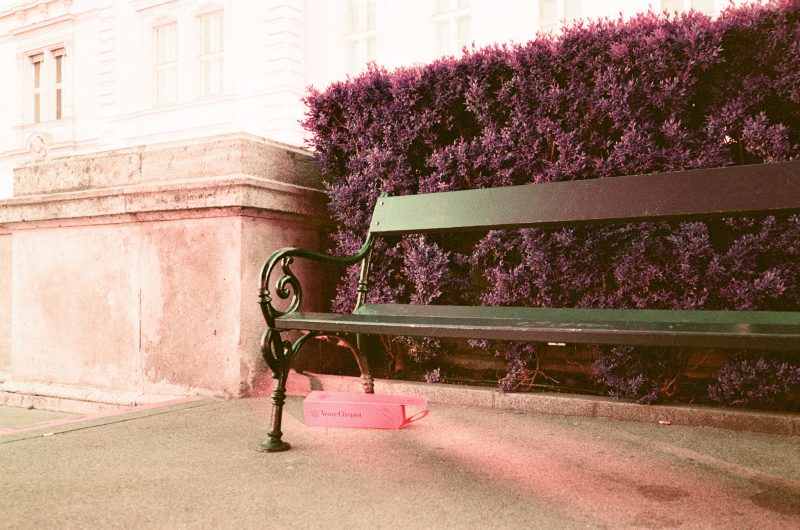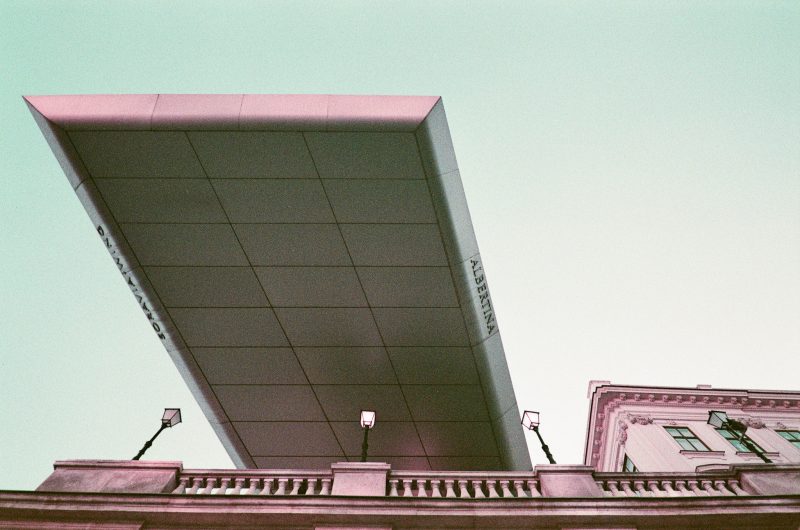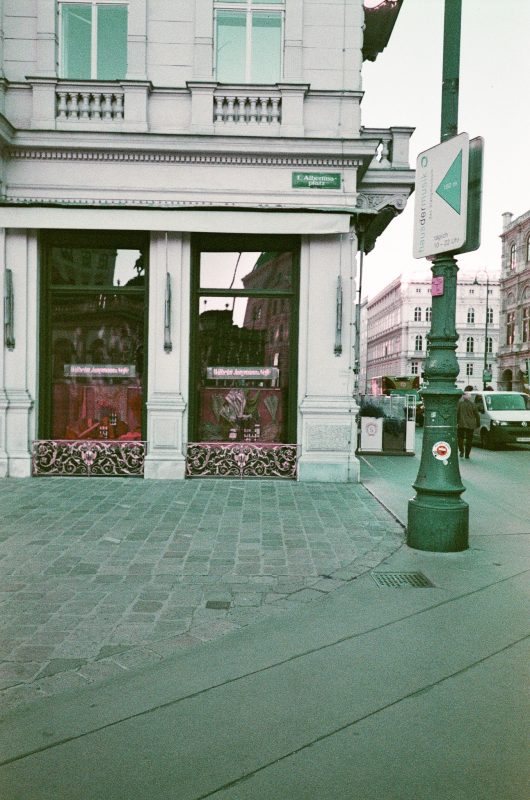Albertinaplatz
1010 Innere Stadt
€ 22,00
Pages: 40 + cover
Edition: 5 + artists copy (first edition)
Date: 2020
Film: Lomography Lomochrome Purple
Camera: Nikon F100
Out of stock
Buy a print
Albertinaplatz was named in 1934 after the Albertina, the historical graphic collection in the later Palais Archduke Albrecht. The name “Albertina” comes from the founder of the collection, Duke Albert Kasimir von Sachsen-Teschen, son-in-law of Empress Maria Theresa. The Albertina is one of the most important and largest graphic collections in the world. It houses around 65,000 drawings and over a million graphic works.
The medieval ring wall ran across Albertinaplatz, on the outside of which the Carinthian Bastion (later Augustinian Bastion) was built.
The square was created by demolishing the Citizens Hospital. It was called Albrechtsplatz from 1877–1920 (after Archduke Albrecht or his palace) and then from 1920–1934 in Red Vienna, Revolutionsplatz; the part of the square that was added in 1947 on the site of the destroyed Philipphof was named Helmut-Zilk-Platz in 2009.
In the course of construction work for the Albertina, a Roman burial ground with fire and body graves was examined. This cemetery, which was laid out south of the Vindobona legionary camp and south-west of the Limes road, served as a burial place from around the 2nd to the 4th century.
The Archduke Albrecht monument is located on Albertinaplatz. It was unveiled on May 21, 1899 on the occasion of the 90th anniversary of the Battle of Aspern.
The Danubius Fountain (vulgar name: Albrechtsbrunnen) can also be found there. It was unveiled on December 24th, 1869. The fountain was created in connection with the architectural reconstruction of the spur of the Augustinian Bastion, which was built according to a design by Moritz von Löhr. The flanks of the fountain were shortened after the bomb damage in 1945. The layout was changed and the figures were partially removed and returned in 1985.











































